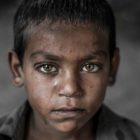
Opinion: Juvenile Justice Systems Are Shrinking — Why Aren’t Their Budgets?
|
Youth arrest rates have plummeted over the past several decades, falling nearly 70% nationwide since 2000, including a 54% reduction in violent offense arrests. There are now fewer youth in juvenile halls or courtrooms and far smaller probation caseloads. Yet state and local governments continue to invest heavily in juvenile justice, shoring up systems that are known to cause harm.
Amid the current economic crisis, maintaining overbuilt juvenile facilities and bloated probation budgets squanders resources that schools, health systems and community-based service providers desperately need. Moreover, funding excessive facility space can needlessly sweep youth into a system bent on self-preservation. In California, like much of the country, juvenile justice systems have experienced significant population reductions.








